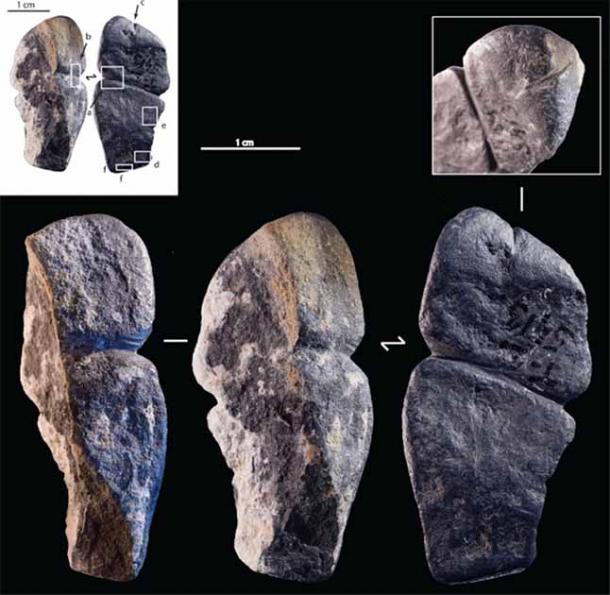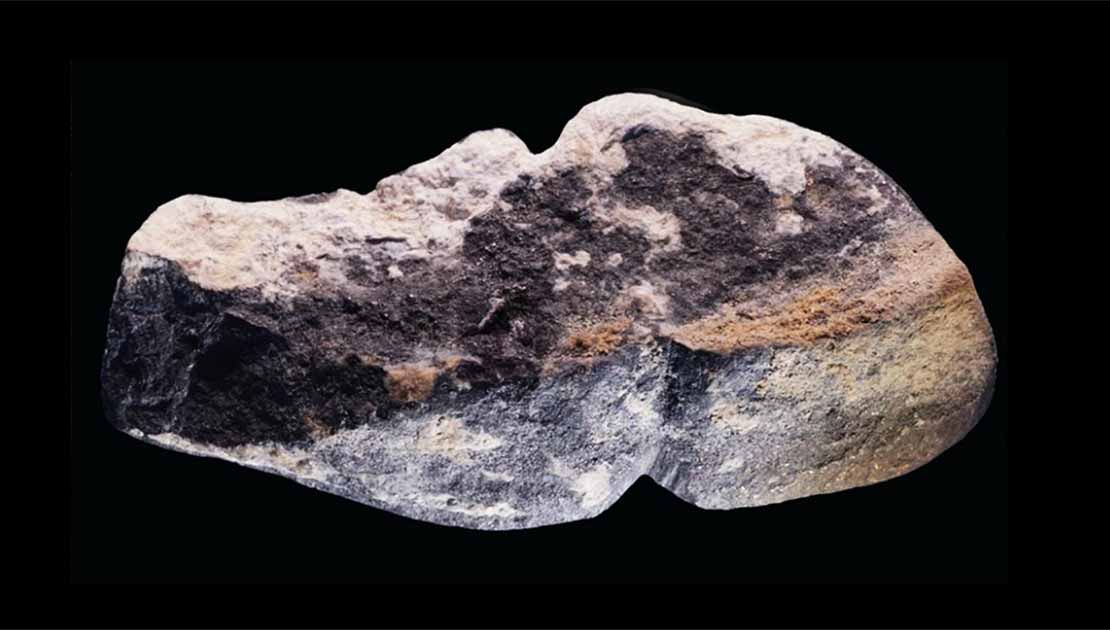Expert Claims This 42,000-year-old Mongolian Rock is the Oldest Phallus in the World
A small and perhaps unremarkable looking rock was recently discovered at a site in Mongolia. Controversially dated to 42,000-years-ago, a scientist has presented the find as one of the oldest crafted phallus-shaped artifacts in the world. But not everyone is convinced.
Pareidolia is a captivating cognitive phenomenon whereby humans perceive familiar patterns in random stimuli, like seeing ducks in clouds or faces in burning firewood. This time the crunching question is whether an archaeologist has truly identified the oldest carved cock rock ever found, or is it a figment of her imagination?

Is the graphite artifact a Mongolian phallus, or is it just a case of pareidolia, like the one seen here? (kcomberg / Adobe Stock)
Big Claims for Such a Small Rock: Dubious Assertions About “Mongolian Phallus”
The so-called “phallic-pendant” was discovered in 2016 at an archaeological site called Tolbor, in Mongolia’s northern Khangai Mountains. This site offers a captivating window into Mongolia's ancient civilizations and their artistic expressions, as Tolbor boasts well-preserved Paleolithic rock art, carved petroglyphs and burial mounds.
- Stone Penis Found in Ancient Ruins in Spain Had Violent Purpose
- Humans Have Been Keeping Dildos Handy for at Least 28,000 Years
According to a new study published in Nature Scientific Reports, led by Professor Solange Rigaud, an archaeologist at the University of Bordeaux, the 4.3-centimeter (1.69 in) piece of carved graphite is “a pendant.” Moreover, the researcher claims it is the “earliest-known sexed anthropomorphic representation,” suggesting our species has been “artistically recreating the penis for at least 42,000 years.”
42,000-year-old Mongolian pendant may be earliest known phallic art | Science https://t.co/7spwlD8NB8
— Chris Stringer (@ChrisStringer65) June 17, 2023
Putting the Questionable “Mongolian Phallus” into Context
The alleged “phallic-rock” was found beside a fragment of an ostrich eggshell pendant and beads, other stone pendants and animal bones. However, while the study claims the “pendant” was created between 42,400 and 41,900 years ago, the radiocarbon dating was not conducted on the artifact itself, but on organic material found nearby.
Professor Rigaud’s primary argument is that when you want to represent something abstractly “you will choose very specific features that really characterize what you want to represent.” In this case, microscopy suggested the ancient stone carver took care to “define the urethral opening and to distinguish the glans from the shaft,” with a deliberate groove.
Ancient Phallic Pendant Traders?
Rigaud also argues that graphite wasn’t widely available around Tolbor, which means the pendant may have been imported from elsewhere, “perhaps through trade.” Furthermore, adding to the speculations, the researcher said the pendant was “smoother on the back than the front,” suggesting “a string was likely fastened around the glans and worn around the neck.”
The lead author of the new study wrote that because the wear was so prevalent the artifact found in Mongolia was “likely handed down across multiple generations.” However, all this said, there are other archaeologists who are questioning whether this is actually a Mongolian phallus. Some have even suggested that it’s just a misinterpreted tool.

Images of the graphic pendant from different angles. The study claims that it was carved into a Mongolian phallus 42,000 years ago. (Solange Rigaud et. al. / CC BY 4.0)
A Mongolian Phallus or a Graphite Tool?
A report on Science.org sought the insights of Curtis Runnels, an archaeologist at Boston University, regarding the claims made in the new study. Runnels said many of the claims about phallic imagery “are like a face in a cloud, and they often only exist in the eye of the beholder.” Pointing out that the pendant doesn’t really even look phallic without a wild stretch of the imagination, he described the find as a “small and rather shapeless object.”
- The Badlands Guardian and Other Uncanny Products of Pareidolia
- 2,000-Year-Old Roman Phallus Could Be Oldest Known Sex Toy
Dissatisfied with the claims made in the study, Runnels stated that he “would need to be convinced” that the artifact was really intended to represent a penis and not just another example of pareidolia. In reality, there are endless alternatives. It could have been shaped for binding to wood fragments, crushing mushrooms in a wooden bowl, or it could have served an entirely different practical purpose.
In the end, you can decide for yourself. Is the artifact actually a Mongolian phallus—one of the oldest phallic artifacts in the world—or is Professor Rigaud simply suffering from the effects of illusory perceptions commonly referred to as pareidolia?
Top image: Study claims that this piece of graphite is actually a 42,000-year-old carved Mongolian phallus. Source: Solange Rigaud et. al. / CC BY 4.0
By Ashley Cowie


















Comments
I’m not convinced that this is a phallus. It looks like a spear or arrowhead sharpening tool or another tool of some sort. Most phallus’ are better shaped and are clearly a representation of the penis. This one is questionable.